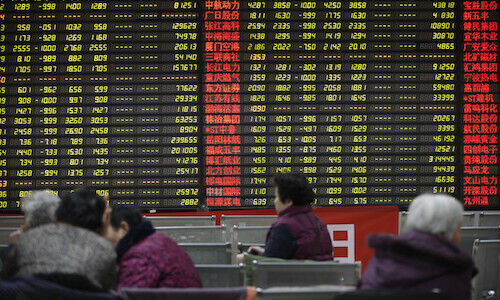Last week, Chinese authorities began to ramp up efforts with multiple measures aimed at supporting the economy and markets. Nonetheless, global banks note that more needs to be done to reignite investor confidence.
A series of measures were rolled out last week to support China’s faltering growth. The People’s Bank of China delivered a sudden 50 basis points cut of the reserve requirement ratio. Loan usage rules in the property sector were relaxed. Joint policies to strengthen cross-border flows with Hong Kong were introduced. Authorities were also reportedly considering a stabilization fund of 2 trillion yuan ($282 billion) to support onshore stocks.
The Hang Seng Index and CSI 300 Index both rebounded from their 2024 lows last week before moderating. Year-to-date, the two equity benchmarks are down 6.1 percent and 3.2 percent, respectively.
Continued Headwinds
Despite signs of increased commitment to ease, there are still challenges ahead. According to Standard Chartered, there have been downside surprises in macro data points such as GDP growth, property investment and retail sales. There are also persistent geopolitical and regulatory uncertainties that could limit the reversal of foreign fund outflows.
«[T]he continued presence of long-term uncertainty about the growth outlook may limit equity market gains,» said investment strategists Cedric Lam and Michelle Kam in a recent note, adding that the bank retains a neutral view on China equities within Asia ex-Japan.
More Easing Required
In addition to overcoming challenges, banks highlighted that even more support policy measures will be required. According to UBS, this includes another three or four rounds of interest rate and reserve ratio cuts.
«What has been announced so far is still within our base case macro scenario which is 'just enough' policy easing,» said China equity analyst Sumer Xia in a podcast, highlighting defensive sectors like state lenders, telecoms and utilities as the bank’s preferred choices. «If [further] policy support comes too little, too late or the longer term economic transition does not go that well, market volatility could occur again.»
NPC in March
One of the next major signs of policy direction is at the upcoming March meeting of the National People’s Congress (NPC) – China’s top legislative body – where more visibility on annual growth targets and fiscal plans will be unveiled.
«A sustained rally would require more follow-through in the upcoming NPC meetings on March 5. But we are finally seeing more forceful, continued and coordinated responses. And valuations reflect the current sentiment and allow a margin of safety,» said BNP Paribas Wealth Management's Asia chief investment officer Prashant Bhayani in a podcast.
























